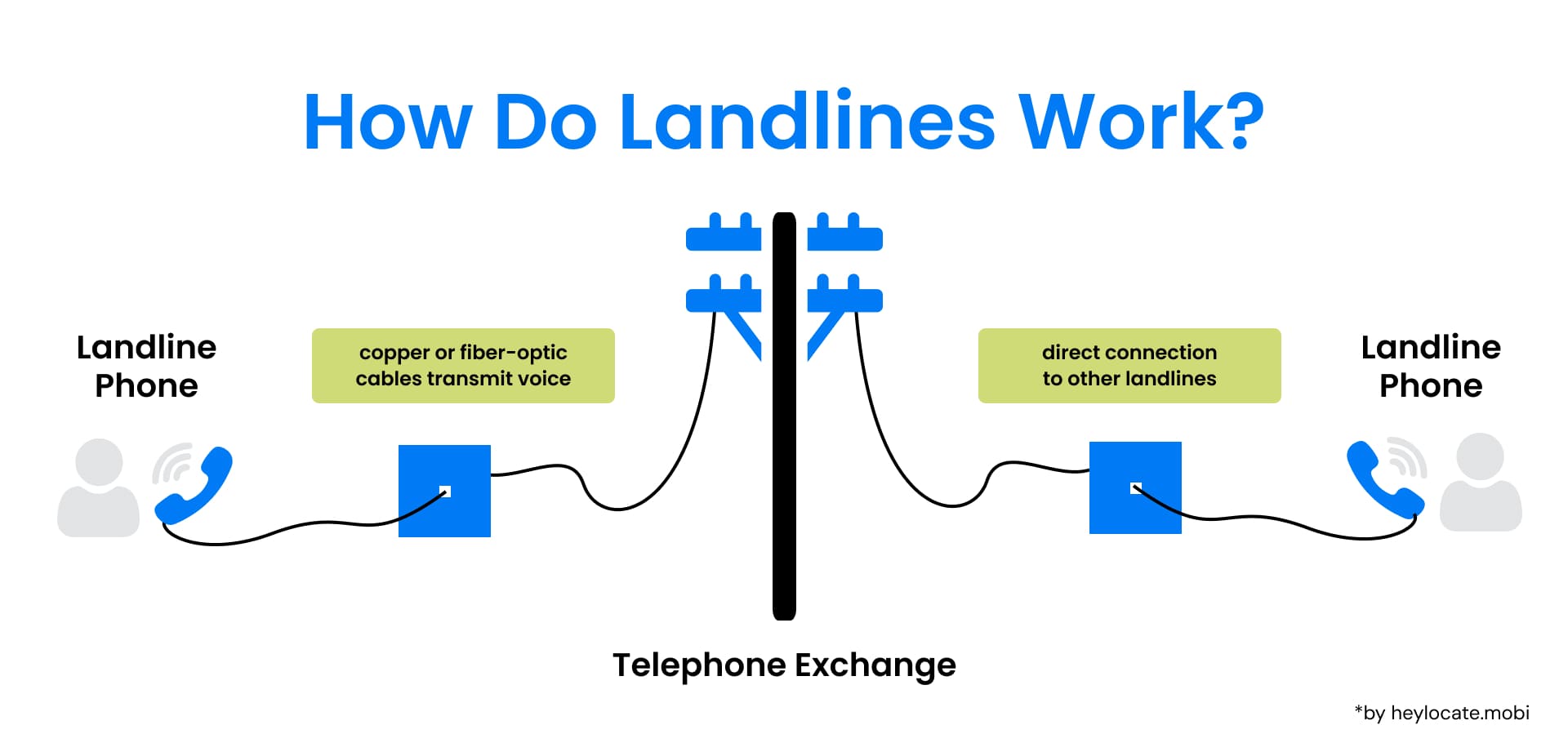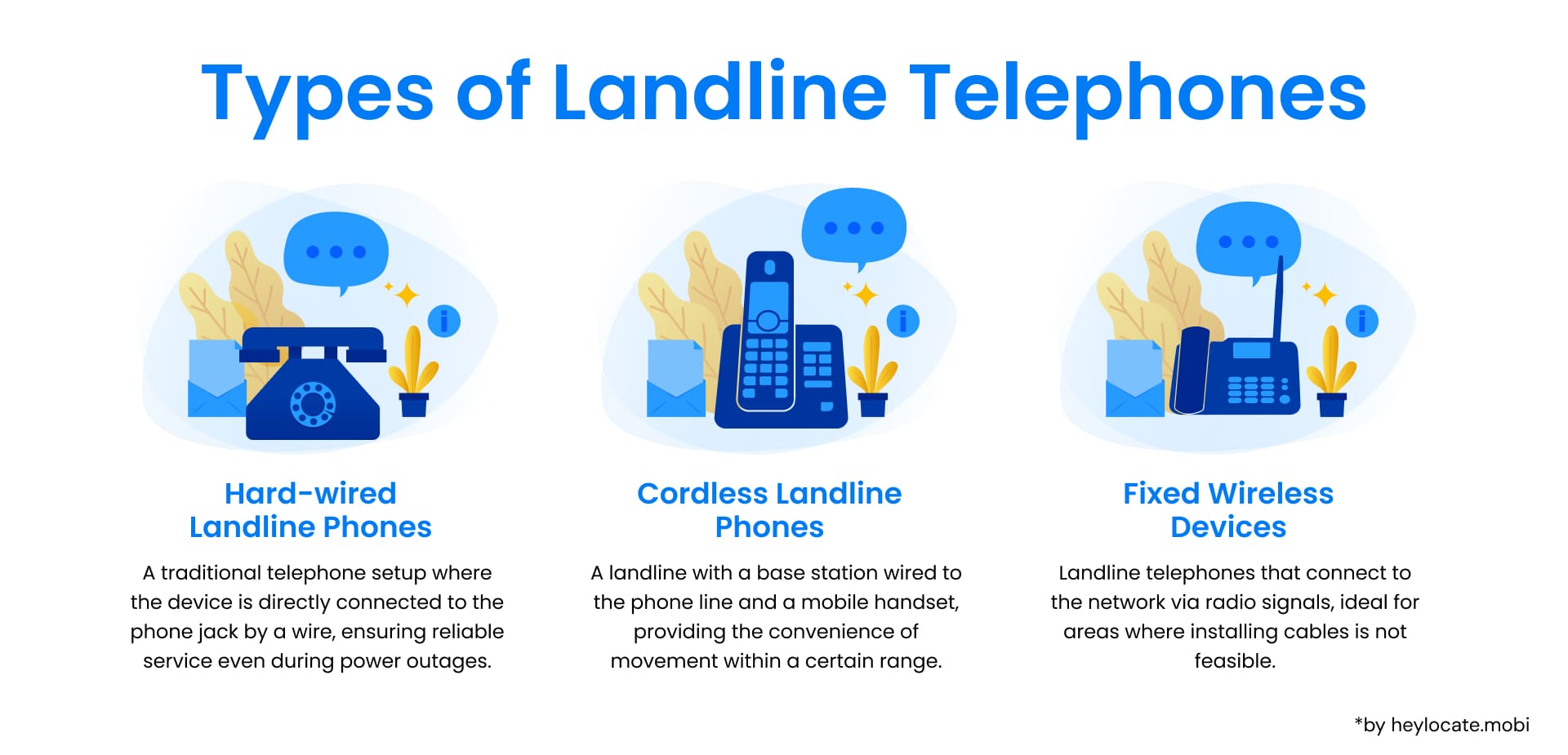Landline Number
What is a Landline Number?
A landline number is a specific identifier assigned to a landline telephone, which is a communication device that transmits voice through physical cable or wire. Unlike cell phones or data-based telephone services, a dedicated link between the telephone exchange and the landline is required, which allows for direct communication between two parties.

Technical Aspects of Landline Telephones
Landlines operate using a network of cables and wires that connect both individual subscriptions to a central exchange. This infrastructure enables robust voice communication irrespective of the internet coverage.

Components:
- Telephone instrument (landline phone): Calls can be made and received.
- Telephone exchange: Switching calls between different numbers.
- Physical infrastructure: Outside plant (cables connecting exchange to premises) and customer premises wiring (connecting landline phone to wall jack).
Cabling Tiers:
- Copper wires: Reliable for short and medium distances.
- Optical fiber cables: For long distances, they have greater bandwidth and can transmit voice, data, and video signals.
Types of Landline Telephones
- Hard-wired landline phones: Physically connected to the telephone jack with a cord that can provide a secure and steady connection.
- Cordless landline phones: Provide mobility in a desirable range, consisting of a base station connected to the jack and handsets communicating with the base station without wires.
- Fixed wireless devices: Utilize radio signals for connection, normally used in remote areas where cables are impossible.

Landline and Internet Integration
- Technologies such as Digital Subscriber Line (DSL) can make it possible to get high-speed internet access over frequent landline connections.
- DSL sends data using the existing copper lines, sharing the bandwidth between voice and data transmission.
- A Digital Subscriber Line Access Multiplexer (DSLAM) establishes a seamless connection between the telephone network of the landline connection and the data transfer network of the internet service provider.
Trends in Landline Usage
The prevalence of landline usage has declined with the rise of mobile phones, internet-based calling services (VoIP), and more cost-effective alternatives.
Regional contrasts are the most obvious. Developed nations have experienced more pronounced declines compared to developing regions, where mobile phones are preferred due to limited landline infrastructure.
Still, the Public Switched Telephone Network (PSTN) is phased out in favor of internet-based VoIP services, that have plenty of benefits. These are cost savings, scalability, flexibility, reduced call rates, compatibility with existing landline numbers, and features like call recording and forwarding.
References
- Telephone number – Wikipedia
- What’s a Landline Number Service, Benefits, Snags, and How to Get One
- What is Landline Number? Everything You Need to Know
- What is a Landline Number? – GadgetMates
- What is a Landline Number? – All You Need To Know – JookSMS